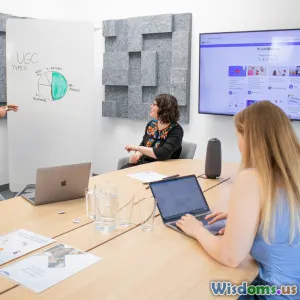
The Surprising Costs Hidden in Top Architecture Programs
9 min read Uncover hidden financial challenges in elite architecture programs beyond tuition fees. (0 Reviews)
The Surprising Costs Hidden in Top Architecture Programs
When most people think of enrolling in a top architecture program, the first number that comes to mind is the tuition fee. For aspiring architects, prestigious institutions are an alluring gateway to vibrant careers. Yet, lurking beneath the price tag of tuition and housing are less obvious, often overlooked expenses that make studying architecture significantly more expensive than it appears. These hidden costs can challenge students and families, potentially influencing decisions about pursuing or continuing architectural education.
In this article, we will unpack these surprising costs, delve into why they exist, and offer insight into how students can prepare both financially and strategically to tackle the true cost of architectural education.
Beyond Tuition: The High Cost of Studio Materials and Supplies
Architecture is an intensely hands-on discipline. Most university departments extend beyond traditional lectures, requiring students to purchase specific materials for drawing, modeling, and prototyping. For example, students often need high-quality drafting paper, specialty pens, cutting mats, foam boards, balsa wood, glue, and even 3D printing materials.
According to a survey conducted by the Association of Collegiate Schools of Architecture (ACSA), first-year students can expect to pay between $1,000 to $2,000 annually just for studio supplies. This doesn’t include costs for replenishing materials after projects or the occasional splurge on advanced tools.
Case Study: Columbia University's Studio Fees
At Columbia’s Graduate School of Architecture, Planning and Preservation, beyond the already high tuition ($64,788 for the 2023–2024 academic year), students report paying an additional $1,500 per year on average for studio supplies. This is partially due to the school’s emphasis on physical model-making and intricate mock-ups, which require costly materials.
These expenses, while integral to the learning process, often catch students by surprise, especially those who have budgeted solely based on tuition and accommodation.
Essential Software Licenses: Hidden Digital Costs
Digital proficiency is as vital as sketching skills in architecture today. Students must use advanced software like AutoCAD, Revit, Rhino, SketchUp, and Adobe Creative Suite. While some schools provide access on campus computers, many students prefer or are encouraged to have these on personal devices to work flexibly.
Individual licenses can range from $20 to over $300 per month, depending on the product and plan. Some schools negotiate discounted or free licenses, but limitations often exist.
Example:
- Autodesk AutoCAD: Approximately $200/month without an educational plan.
- Adobe Creative Cloud: Around $54.99/month for a full suite.
Students who must pay these out of pocket may see software costs exceeding $1,000 annually, a noteworthy burden alongside tuition.
Studio Fees and Printing Costs
Many architecture programs impose mandatory studio fees, which usually cover maintenance of workspace, models, and communal tools. Fees can range from $200 to $1,000 each semester.
Additionally, 3D printing, large-format plotting (printing expansive blueprints), and binding physical reports require specialized services charged at premium rates.
Real Example:
At the University of Southern California, a single plot at its print lab costs roughly $5 for a standard architectural print. For a semester involving 10–15 large prints, plus multiple 3D prints, expenses can reach several hundred dollars.
Printing is not an optional expense — it is integral to presenting portfolios, thesis projects, and critiques.
Travel, Field Trips, and Networking Events
Architecture programs often encourage or require site visits, whether local or international, to complement theoretical learning with real-world experience. These trips sometimes come as part of courses or study-abroad programs.
Top universities may organize excursions to cities like Rome, Paris, or Tokyo, providing unique exposure but at substantial cost. For instance:
- A one-week field trip to study Roman architecture can cost $1,500–$3,000 for airfare, accommodation, and admission fees.
- Conferences and symposia, essential for networking and portfolio building, often entail registration, travel, and living expenses.
While enriching, these experiences add unexplained financial layers students must prepare for.
Hidden Opportunity Costs: Time and Work
An often underrated cost is the time investment architecture demands. Studio classes and project deadlines can require 50–60 hours per week, leaving little time for paid employment.
Financial strain thus intensifies as students may forgo working in favor of educational commitments, impacting income and long-term debt accrual.
Expert Insight: Balancing Budget and Quality Education
Dr. Maya Lindstrom, an architectural educator and practicing architect, warns, "Students undervalue these ancillary costs, which can sometimes surpass tuition, putting immense pressure on their academic performance and well-being. Budget planning should encompass all these facets for a more realistic outlook."
Navigating Hidden Costs:
- Scholarships and grants specifically for materials or tech purchases.
- Buying used or previous-year materials when possible.
- Utilizing university-provided software access at computer labs.
- Participating in shared print programs or crowdsourced funding for expensive trips.
Why Are These Costs So High?
The practical nature of architecture means students require an array of tools: both physical and digital — each expensive in its domain.
Further, institutions strive to maintain cutting-edge technologies and studios that mimic professional offices, projecting authenticity but at increased operational costs, often passed on to students.
Conclusion: The Full Price Tag of Architectural Education
Selecting a top architecture school is about more than just prestige and tuition—weighing hidden and ancillary costs is crucial. From costly materials, software licenses, printing, studio fees, to immersive travel opportunities, these expenses can cumulatively double or even triple the education cost portrayed on paper.
Prospective students should conduct thorough budget assessments, seek advice from current students and alumni, and explore financial aid options that address these less-visible costs.
Understanding this hidden financial landscape empowers architectural students to take informed steps towards their education and career journey, avoiding surprises and ensuring their passion does not become a prohibitive expense.
Remember: The bricks and mortar are only part of building a future architect; awareness and planning complete the foundation.
References:
- Association of Collegiate Schools of Architecture (ACSA) Annual Survey
- Columbia GSAPP Tuition and Fees Report 2023
- University of Southern California School of Architecture Resource Fees
- Autodesk and Adobe pricing plans
- Interviews with Dr. Maya Lindstrom, Architect and Educator
Rate the Post
User Reviews
Popular Posts

















